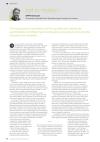NEW PAGE – UNDER CONSTRUCTION (April 6th 2020)
What is Timecode?
Timecode is an audio signal consisting of a stream of data which is a constantly changing time signal. The timecode standard was originally used in the film / TV industry to enable audio and video/film to remain synchronised. The standard was formalised in 1967 and was made available for the industry to use, under the guidance of the Society of Motion Picture and Television Engineers (SMPTE, pronounced ‘SIMPTEE’).
The timecode consists of the familiar Hours (0-23), Minutes (0-59) and Seconds (0-59) (24 hour clock format) as well as Frames (most often 30 frames per second). This provides a high level of accuracy to keep video, lighting, sound, automation and any other systems in perfect synchronisation.

LSI: SMPTE Timecode for Automation (February 2024)
[External Website]
From Lighting & Sound International
Why is it used?
On large shows, particularly musicals, a timecoded sequence allows very accurate cues to be triggered reliably each show. Some sequences might be impossible to cue traditionally – there are too many cues running for the DSM to call them, and maintaining accuracy is even harder, given the variable delays between a DSM saying ‘GO’ and the operator pressing the ‘Go’ button.
Timecode is also integral to large scale fireworks shows, synchronising the pyrotechnics, sound, lighting and projections.
What do I need to run timecode cues?
Coming soon
When was timecode first used in entertainment?
Further research is underway. Notes below:
1988: Akai S1000 Sampler – able to receive MIDI timecode and trigger samples.
1992: MA Lighting Scancommander has MIDI and SMPTE control input (at least from 1994)
1993: Sunset Boulevard, Adelphi Theatre: MIDI Timecode from the keyboard player triggers film and effects equipment in sync with the ‘On the Road’ sequence.
1994?: Axon ShowCAD has SMPTE input
1994: Wholehog v1.10 – With this software update, and a MIDI/Timecode add-on card, the Wholehog could receive MIDI or SMPTE timecode (24fps).
1994: Strand 430: MIDI In/Out/Thru
Overview
Timecode on EOS (2020) from ETC Study Hall
Timecode on GrandMA2 (2015)
Tools
- TimeLord – Media Time Code Player
